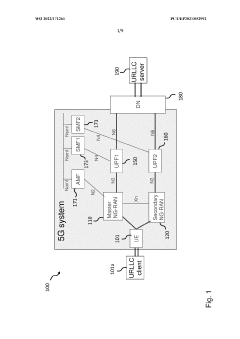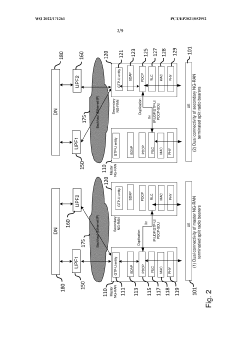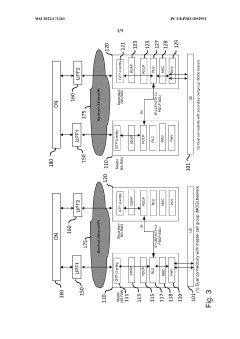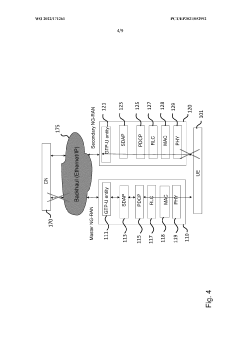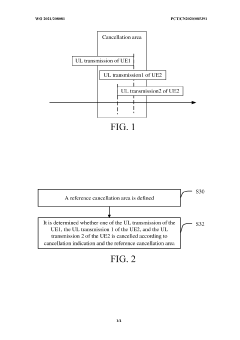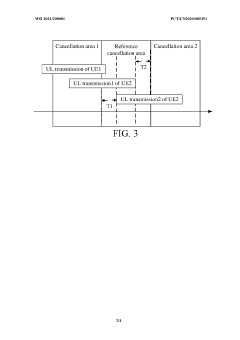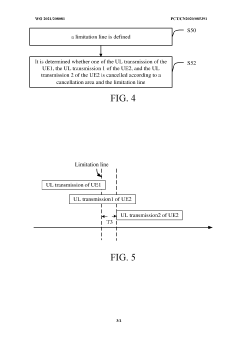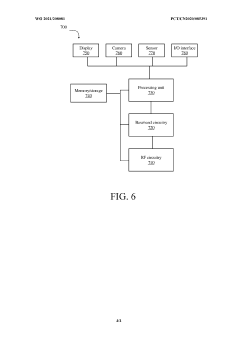What are the Challenges of 5G UC in Arctic Region Communication?
JUL 18, 20259 MIN READ
Generate Your Research Report Instantly with AI Agent
Patsnap Eureka helps you evaluate technical feasibility & market potential.
5G UC Arctic Challenges
The deployment of 5G Ultra-Capacity (UC) networks in the Arctic region presents unique challenges due to the extreme environmental conditions and geographical characteristics of the area. The harsh climate, including severe cold temperatures, strong winds, and heavy snowfall, poses significant obstacles to the installation and maintenance of 5G infrastructure. These conditions can affect the performance and reliability of equipment, requiring specialized hardware designed to withstand extreme cold and moisture.
The vast, sparsely populated areas of the Arctic region create additional challenges for 5G UC implementation. The low population density makes it economically challenging to justify the extensive infrastructure required for comprehensive coverage. This results in limited connectivity options and potential gaps in service, particularly in remote areas. The lack of existing infrastructure, such as fiber optic networks and power grids, further complicates the deployment of 5G UC systems.
Geographical features of the Arctic, including mountainous terrain, fjords, and ice-covered landscapes, create obstacles for signal propagation and network planning. These physical barriers can cause signal attenuation and multipath fading, reducing the effectiveness of 5G UC communications. The presence of large bodies of water and ice also affects radio wave propagation, requiring careful consideration in network design and optimization.
The Arctic's unique atmospheric conditions, such as the ionospheric effects and aurora borealis, can interfere with radio signals and satellite communications. These phenomena may cause signal distortions, scintillation, and temporary outages, impacting the reliability and performance of 5G UC networks. Addressing these issues requires specialized signal processing techniques and adaptive antenna systems.
Seasonal variations in daylight hours and solar activity in the Arctic region pose additional challenges for 5G UC systems. The extended periods of darkness during winter months can affect solar-powered equipment, necessitating alternative power sources or energy storage solutions. Conversely, the midnight sun phenomenon during summer can lead to increased electromagnetic interference and potential overheating of equipment.
The remote nature of many Arctic locations presents logistical challenges for equipment installation, maintenance, and upgrades. Access to sites may be limited to specific seasons or require specialized transportation methods, increasing the complexity and cost of network deployment and maintenance. This remoteness also impacts the ability to quickly respond to equipment failures or network issues, potentially resulting in extended service interruptions.
Environmental concerns and regulations in the Arctic region add another layer of complexity to 5G UC deployment. The sensitive ecosystem and wildlife habitats require careful consideration in network planning and installation to minimize ecological impact. Compliance with environmental regulations and obtaining necessary permits can be time-consuming and may limit the placement of network infrastructure.
The vast, sparsely populated areas of the Arctic region create additional challenges for 5G UC implementation. The low population density makes it economically challenging to justify the extensive infrastructure required for comprehensive coverage. This results in limited connectivity options and potential gaps in service, particularly in remote areas. The lack of existing infrastructure, such as fiber optic networks and power grids, further complicates the deployment of 5G UC systems.
Geographical features of the Arctic, including mountainous terrain, fjords, and ice-covered landscapes, create obstacles for signal propagation and network planning. These physical barriers can cause signal attenuation and multipath fading, reducing the effectiveness of 5G UC communications. The presence of large bodies of water and ice also affects radio wave propagation, requiring careful consideration in network design and optimization.
The Arctic's unique atmospheric conditions, such as the ionospheric effects and aurora borealis, can interfere with radio signals and satellite communications. These phenomena may cause signal distortions, scintillation, and temporary outages, impacting the reliability and performance of 5G UC networks. Addressing these issues requires specialized signal processing techniques and adaptive antenna systems.
Seasonal variations in daylight hours and solar activity in the Arctic region pose additional challenges for 5G UC systems. The extended periods of darkness during winter months can affect solar-powered equipment, necessitating alternative power sources or energy storage solutions. Conversely, the midnight sun phenomenon during summer can lead to increased electromagnetic interference and potential overheating of equipment.
The remote nature of many Arctic locations presents logistical challenges for equipment installation, maintenance, and upgrades. Access to sites may be limited to specific seasons or require specialized transportation methods, increasing the complexity and cost of network deployment and maintenance. This remoteness also impacts the ability to quickly respond to equipment failures or network issues, potentially resulting in extended service interruptions.
Environmental concerns and regulations in the Arctic region add another layer of complexity to 5G UC deployment. The sensitive ecosystem and wildlife habitats require careful consideration in network planning and installation to minimize ecological impact. Compliance with environmental regulations and obtaining necessary permits can be time-consuming and may limit the placement of network infrastructure.
Arctic Market Analysis
The Arctic region presents a unique and challenging market for 5G UC (Ultra-Reliable Low-Latency Communication) deployment. Despite its sparse population, the Arctic has seen increasing economic activities, particularly in resource extraction, shipping, and scientific research. These sectors drive the demand for reliable and high-speed communication networks, making the Arctic a potential growth market for 5G UC technologies.
The market size for 5G UC in the Arctic is relatively small compared to more populated regions, but it is expected to grow significantly in the coming years. This growth is primarily fueled by the increasing presence of industrial operations, research stations, and the opening of new shipping routes due to climate change. The oil and gas industry, in particular, has been a major driver for communication infrastructure improvements in the region.
One of the key market segments for 5G UC in the Arctic is the maritime industry. As the Northwest Passage becomes more navigable, shipping companies are looking for reliable communication systems to ensure safe navigation and efficient operations. This creates a substantial opportunity for 5G UC providers to offer solutions tailored to maritime needs, such as ship-to-shore communications and remote monitoring systems.
The scientific research community represents another significant market segment. Arctic research stations require robust communication networks to transmit large volumes of data, conduct remote sensing operations, and maintain contact with researchers in the field. 5G UC's low latency and high reliability make it an attractive option for these applications, potentially driving adoption in this sector.
Government and military operations in the Arctic also contribute to the market potential for 5G UC. As geopolitical interests in the region intensify, there is a growing need for advanced communication systems to support surveillance, border control, and emergency response operations. This creates opportunities for 5G UC providers to develop specialized solutions for these critical applications.
However, the Arctic market for 5G UC faces several challenges. The harsh environmental conditions, including extreme cold, long periods of darkness, and electromagnetic interference from solar activity, pose significant technical hurdles. Additionally, the high cost of infrastructure deployment in remote areas and the limited customer base make it challenging to achieve economies of scale.
Despite these challenges, the strategic importance of the Arctic region and the increasing economic activities are likely to drive investment in communication infrastructure. This could lead to partnerships between governments, private sector companies, and technology providers to overcome the financial and technical barriers to 5G UC deployment in the Arctic.
The market size for 5G UC in the Arctic is relatively small compared to more populated regions, but it is expected to grow significantly in the coming years. This growth is primarily fueled by the increasing presence of industrial operations, research stations, and the opening of new shipping routes due to climate change. The oil and gas industry, in particular, has been a major driver for communication infrastructure improvements in the region.
One of the key market segments for 5G UC in the Arctic is the maritime industry. As the Northwest Passage becomes more navigable, shipping companies are looking for reliable communication systems to ensure safe navigation and efficient operations. This creates a substantial opportunity for 5G UC providers to offer solutions tailored to maritime needs, such as ship-to-shore communications and remote monitoring systems.
The scientific research community represents another significant market segment. Arctic research stations require robust communication networks to transmit large volumes of data, conduct remote sensing operations, and maintain contact with researchers in the field. 5G UC's low latency and high reliability make it an attractive option for these applications, potentially driving adoption in this sector.
Government and military operations in the Arctic also contribute to the market potential for 5G UC. As geopolitical interests in the region intensify, there is a growing need for advanced communication systems to support surveillance, border control, and emergency response operations. This creates opportunities for 5G UC providers to develop specialized solutions for these critical applications.
However, the Arctic market for 5G UC faces several challenges. The harsh environmental conditions, including extreme cold, long periods of darkness, and electromagnetic interference from solar activity, pose significant technical hurdles. Additionally, the high cost of infrastructure deployment in remote areas and the limited customer base make it challenging to achieve economies of scale.
Despite these challenges, the strategic importance of the Arctic region and the increasing economic activities are likely to drive investment in communication infrastructure. This could lead to partnerships between governments, private sector companies, and technology providers to overcome the financial and technical barriers to 5G UC deployment in the Arctic.
5G UC Arctic Limitations
The deployment of 5G Ultra-Capacity (UC) networks in the Arctic region faces significant challenges due to the unique environmental and geographical conditions. The extreme cold temperatures, which can drop below -40°C, pose severe stress on electronic components and batteries, potentially leading to equipment failures and reduced operational efficiency. Additionally, the lack of existing infrastructure in many parts of the Arctic necessitates substantial investment in building new cell towers and fiber optic networks from scratch.
The vast, sparsely populated areas of the Arctic present another major hurdle for 5G UC implementation. The technology's reliance on high-frequency millimeter waves, which have limited range and are easily obstructed, makes it difficult to provide comprehensive coverage across the expansive terrain. This limitation is further exacerbated by the presence of ice and snow, which can interfere with signal propagation and reduce network reliability.
The Arctic's unique daylight patterns, with extended periods of darkness during winter months, pose challenges for solar-powered equipment commonly used in remote locations. This necessitates the development of alternative power solutions or the implementation of more robust and energy-efficient systems to ensure continuous network operation.
Satellite connectivity, often used to supplement terrestrial networks in remote areas, faces its own set of challenges in the Arctic. The region's high latitude can result in poor satellite visibility and increased signal latency, potentially impacting the performance of 5G UC services that require low-latency communications.
The harsh Arctic climate also complicates maintenance and repair operations. Access to remote sites can be severely limited during winter months, making it difficult to perform routine maintenance or address equipment failures promptly. This can lead to extended periods of service disruption and increased operational costs.
Furthermore, the Arctic's sensitive ecosystem and ongoing climate change effects necessitate careful consideration of the environmental impact of 5G UC infrastructure deployment. Balancing the need for technological advancement with environmental preservation adds another layer of complexity to network planning and implementation in the region.
Lastly, the Arctic's geopolitical significance and the presence of multiple national interests in the region can complicate the regulatory landscape for 5G UC deployment. Coordinating spectrum allocation, ensuring cross-border interoperability, and addressing security concerns in this strategically important area present additional challenges that must be carefully navigated.
The vast, sparsely populated areas of the Arctic present another major hurdle for 5G UC implementation. The technology's reliance on high-frequency millimeter waves, which have limited range and are easily obstructed, makes it difficult to provide comprehensive coverage across the expansive terrain. This limitation is further exacerbated by the presence of ice and snow, which can interfere with signal propagation and reduce network reliability.
The Arctic's unique daylight patterns, with extended periods of darkness during winter months, pose challenges for solar-powered equipment commonly used in remote locations. This necessitates the development of alternative power solutions or the implementation of more robust and energy-efficient systems to ensure continuous network operation.
Satellite connectivity, often used to supplement terrestrial networks in remote areas, faces its own set of challenges in the Arctic. The region's high latitude can result in poor satellite visibility and increased signal latency, potentially impacting the performance of 5G UC services that require low-latency communications.
The harsh Arctic climate also complicates maintenance and repair operations. Access to remote sites can be severely limited during winter months, making it difficult to perform routine maintenance or address equipment failures promptly. This can lead to extended periods of service disruption and increased operational costs.
Furthermore, the Arctic's sensitive ecosystem and ongoing climate change effects necessitate careful consideration of the environmental impact of 5G UC infrastructure deployment. Balancing the need for technological advancement with environmental preservation adds another layer of complexity to network planning and implementation in the region.
Lastly, the Arctic's geopolitical significance and the presence of multiple national interests in the region can complicate the regulatory landscape for 5G UC deployment. Coordinating spectrum allocation, ensuring cross-border interoperability, and addressing security concerns in this strategically important area present additional challenges that must be carefully navigated.
Current Arctic Solutions
01 Network architecture for URLLC
5G Ultra-Reliable and Low-Latency Communication (URLLC) requires specific network architectures to meet stringent performance requirements. This includes optimizing radio access networks, core networks, and edge computing resources to minimize latency and enhance reliability. Techniques such as network slicing and dynamic resource allocation are employed to ensure dedicated resources for URLLC services.- Network architecture for URLLC: 5G Ultra-Reliable and Low-Latency Communication (URLLC) requires specific network architectures to meet stringent performance requirements. This includes optimizing radio access networks, core networks, and edge computing resources to minimize latency and enhance reliability. Techniques such as network slicing and dynamic resource allocation are employed to ensure dedicated resources for URLLC services.
- Resource allocation and scheduling for URLLC: Efficient resource allocation and scheduling mechanisms are crucial for URLLC in 5G networks. This involves developing algorithms that can prioritize URLLC traffic, manage radio resources dynamically, and ensure timely transmission of critical data. Advanced scheduling techniques, such as grant-free access and semi-persistent scheduling, are implemented to reduce latency and improve reliability.
- Reliability enhancement techniques: Various techniques are employed to enhance the reliability of URLLC in 5G networks. These include packet duplication, multi-connectivity, and diversity schemes. Advanced error correction and retransmission mechanisms are also implemented to ensure successful data delivery even in challenging network conditions. These techniques work together to achieve the ultra-high reliability required for critical applications.
- Latency reduction methods: Reducing end-to-end latency is a key focus of URLLC in 5G networks. This involves optimizing various aspects of the communication chain, including radio interface design, frame structure, and processing delays. Techniques such as short transmission time intervals, flexible numerology, and early data transmission are implemented to minimize latency and meet the stringent requirements of time-critical applications.
- URLLC applications and use cases: 5G URLLC enables a wide range of applications and use cases that require ultra-reliable and low-latency communication. These include industrial automation, autonomous vehicles, remote surgery, and mission-critical services. The implementation of URLLC in these scenarios involves tailoring network parameters and optimizing performance to meet the specific requirements of each application, ensuring seamless and reliable operation in diverse environments.
02 Resource allocation and scheduling for URLLC
Efficient resource allocation and scheduling mechanisms are crucial for URLLC in 5G networks. This involves developing algorithms that can prioritize URLLC traffic, manage radio resources dynamically, and ensure timely transmission of critical data. Advanced scheduling techniques, such as grant-free access and semi-persistent scheduling, are utilized to reduce latency and improve reliability.Expand Specific Solutions03 Reliability enhancement techniques
Various techniques are employed to enhance the reliability of URLLC in 5G networks. These include packet duplication, multi-connectivity, and diversity schemes. Advanced error correction coding, hybrid automatic repeat request (HARQ) mechanisms, and robust modulation and coding schemes are also implemented to improve the overall reliability of URLLC transmissions.Expand Specific Solutions04 Latency reduction strategies
Minimizing latency is a key focus in 5G URLLC. Strategies include optimizing the frame structure, reducing processing times, and implementing flexible numerology. Advanced techniques such as early data transmission, short transmission time intervals, and preemptive scheduling are used to achieve ultra-low latency. Edge computing and distributed network architectures also play a crucial role in reducing end-to-end latency.Expand Specific Solutions05 QoS management and network slicing for URLLC
Quality of Service (QoS) management and network slicing are essential for supporting URLLC in 5G networks. This involves creating dedicated network slices with specific performance characteristics for URLLC services. Advanced QoS mechanisms, traffic differentiation, and prioritization schemes are implemented to ensure that URLLC requirements are met even in congested network conditions.Expand Specific Solutions
Arctic 5G UC Players
The 5G UC (Ultra-Capacity) deployment in the Arctic region faces a competitive landscape shaped by unique challenges and opportunities. The market is in its early stages, with limited but growing demand due to increasing economic activities and research initiatives in the area. The harsh environmental conditions and sparse population present significant technical hurdles, driving innovation among key players. Companies like Huawei, Ericsson, and Nokia are at the forefront, leveraging their expertise in extreme climate solutions. Emerging players such as ZTE and Samsung are also entering the market, focusing on specialized equipment for low-temperature operations. The technology's maturity is still evolving, with ongoing research and development efforts to optimize network performance in remote, icy terrains.
Huawei Technologies Co., Ltd.
Technical Solution: Huawei has developed a comprehensive 5G solution for Arctic region communication challenges. Their approach includes advanced antenna designs with beamforming technology to improve signal penetration and coverage in harsh Arctic conditions[1]. They've also implemented enhanced network slicing capabilities to prioritize critical communications in remote areas. Huawei's polar-specific 5G base stations are designed to withstand extreme cold and utilize energy-efficient technologies to operate in areas with limited power infrastructure[2]. Additionally, they've developed satellite-terrestrial integration solutions to provide seamless connectivity in areas where traditional infrastructure is impractical[3].
Strengths: Extensive experience in 5G deployment, robust hardware designed for extreme conditions, and integrated satellite solutions. Weaknesses: Potential geopolitical concerns in some markets, and high initial infrastructure costs for remote deployments.
Telefonaktiebolaget LM Ericsson
Technical Solution: Ericsson has focused on developing 5G solutions tailored for Arctic environments. Their approach includes the use of advanced radio designs that can operate in extremely low temperatures, down to -40°C[4]. Ericsson's Arctic-specific 5G technology incorporates enhanced propagation models to account for the unique atmospheric conditions in polar regions. They've also developed specialized power solutions, including hybrid power systems that combine renewable energy sources with traditional generators to ensure reliable operation in remote Arctic locations[5]. Ericsson's network architecture for Arctic 5G includes advanced edge computing capabilities to reduce latency and improve service quality in sparsely populated areas[6].
Strengths: Strong focus on energy efficiency and renewable power solutions, extensive experience in deploying networks in challenging environments. Weaknesses: May face challenges in competing with more established players in some Arctic markets.
Key Arctic 5G Patents
Devices, systems and methods for urllc in a 5g communication network
PatentWO2022171261A1
Innovation
- The implementation of redundant data paths using a network entity that establishes dual PDU sessions with primary and secondary next-generation radio access networks (NG-RANs), employing packet duplication and elimination entities to ensure data reliability and availability by duplicating and eliminating Ethernet frames or DetNet-IP packets across independent paths.
Method for handling inter-UE collision and intra-UE collision
PatentWO2021208081A1
Innovation
- Ultra-reliable low-latency communication (URLLC) in 5G NR enables packet delivery with stringent requirements for availability, latency, and reliability.
- URLLC supports emerging applications such as wireless control in industrial environments, inter-vehicular communications, and tactile internet.
- URLLC aims to guarantee latency of 1 millisecond or less, enabling real-time processing of large amounts of data.
Environmental Impact
The deployment of 5G UC (Ultra-Capacity) networks in the Arctic region presents unique environmental challenges that must be carefully considered. The harsh and sensitive Arctic ecosystem requires special attention to minimize the potential negative impacts of telecommunications infrastructure.
One of the primary concerns is the physical footprint of 5G equipment in pristine Arctic landscapes. The installation of base stations, antennas, and supporting infrastructure can disrupt local habitats and wildlife. Careful site selection and design are crucial to minimize habitat fragmentation and preserve the natural beauty of the region.
Energy consumption is another significant environmental factor. The extreme cold temperatures in the Arctic necessitate additional power for equipment heating and operation. This increased energy demand may lead to higher greenhouse gas emissions if not sourced from renewable energy. Implementing energy-efficient technologies and exploring sustainable power sources, such as wind or solar, can help mitigate this impact.
The Arctic's permafrost poses a unique challenge for 5G infrastructure. As global temperatures rise, the thawing permafrost can cause ground instability, potentially damaging or displacing communication equipment. This necessitates specialized foundation designs and ongoing monitoring to ensure the longevity and reliability of 5G networks in the region.
Electromagnetic radiation from 5G equipment may also have potential effects on Arctic wildlife, particularly migratory birds and marine mammals. While research in this area is ongoing, precautionary measures should be taken to minimize any possible disruption to animal behavior or migration patterns.
The construction and maintenance of 5G networks in the Arctic may also lead to increased human activity in previously undisturbed areas. This can result in unintended consequences such as pollution, waste generation, and disturbance to local ecosystems. Strict environmental protocols and waste management practices must be implemented to protect the delicate Arctic environment.
Climate change amplifies the environmental concerns associated with 5G deployment in the Arctic. As the region experiences rapid warming, the infrastructure must be designed to withstand changing environmental conditions, including more frequent storms, coastal erosion, and sea-level rise. Adaptive planning and resilient design are essential to ensure the long-term sustainability of 5G networks in this dynamic environment.
In conclusion, while 5G UC technology offers significant benefits for Arctic communication, its implementation must be approached with a strong commitment to environmental stewardship. Balancing technological advancement with ecological preservation will be crucial for the sustainable development of telecommunications infrastructure in this unique and vulnerable region.
One of the primary concerns is the physical footprint of 5G equipment in pristine Arctic landscapes. The installation of base stations, antennas, and supporting infrastructure can disrupt local habitats and wildlife. Careful site selection and design are crucial to minimize habitat fragmentation and preserve the natural beauty of the region.
Energy consumption is another significant environmental factor. The extreme cold temperatures in the Arctic necessitate additional power for equipment heating and operation. This increased energy demand may lead to higher greenhouse gas emissions if not sourced from renewable energy. Implementing energy-efficient technologies and exploring sustainable power sources, such as wind or solar, can help mitigate this impact.
The Arctic's permafrost poses a unique challenge for 5G infrastructure. As global temperatures rise, the thawing permafrost can cause ground instability, potentially damaging or displacing communication equipment. This necessitates specialized foundation designs and ongoing monitoring to ensure the longevity and reliability of 5G networks in the region.
Electromagnetic radiation from 5G equipment may also have potential effects on Arctic wildlife, particularly migratory birds and marine mammals. While research in this area is ongoing, precautionary measures should be taken to minimize any possible disruption to animal behavior or migration patterns.
The construction and maintenance of 5G networks in the Arctic may also lead to increased human activity in previously undisturbed areas. This can result in unintended consequences such as pollution, waste generation, and disturbance to local ecosystems. Strict environmental protocols and waste management practices must be implemented to protect the delicate Arctic environment.
Climate change amplifies the environmental concerns associated with 5G deployment in the Arctic. As the region experiences rapid warming, the infrastructure must be designed to withstand changing environmental conditions, including more frequent storms, coastal erosion, and sea-level rise. Adaptive planning and resilient design are essential to ensure the long-term sustainability of 5G networks in this dynamic environment.
In conclusion, while 5G UC technology offers significant benefits for Arctic communication, its implementation must be approached with a strong commitment to environmental stewardship. Balancing technological advancement with ecological preservation will be crucial for the sustainable development of telecommunications infrastructure in this unique and vulnerable region.
International Regulations
The deployment of 5G UC (Ultra-Reliable Low-Latency Communication) in the Arctic region faces unique challenges in terms of international regulations. The Arctic is a geopolitically sensitive area, with multiple nations claiming territorial rights and interests. This complex international landscape necessitates careful consideration of regulatory frameworks to ensure seamless and compliant 5G UC operations.
One of the primary regulatory challenges is the allocation and coordination of radio frequency spectrum. The International Telecommunication Union (ITU) plays a crucial role in managing global spectrum allocation, but the Arctic's unique geographical position spanning multiple countries requires additional coordination. Nations bordering the Arctic, including Russia, Canada, the United States, Norway, and Denmark, must collaborate to establish harmonized spectrum policies that allow for efficient 5G UC deployment without causing interference across borders.
Environmental protection regulations also pose significant challenges for 5G UC implementation in the Arctic. The region's fragile ecosystem is protected by various international agreements, such as the Arctic Environmental Protection Strategy and the Arctic Council's conservation efforts. These regulations may limit the placement and density of 5G infrastructure, requiring innovative solutions to minimize environmental impact while maintaining network performance.
Maritime regulations present another layer of complexity for 5G UC in the Arctic. The International Maritime Organization (IMO) sets standards for safety and environmental protection in international waters. As 5G UC aims to enhance maritime communication and navigation, compliance with IMO regulations is essential. This includes adhering to safety standards for equipment installation on vessels and ensuring that 5G signals do not interfere with critical maritime communication systems.
Data privacy and security regulations also play a crucial role in 5G UC deployment. The Arctic's strategic importance and the presence of multiple national interests necessitate robust data protection measures. Compliance with international data protection standards, such as the General Data Protection Regulation (GDPR) for European Arctic territories, must be ensured. Additionally, cybersecurity regulations to protect critical infrastructure and sensitive information transmitted over 5G networks in the Arctic must be addressed.
Lastly, the deployment of 5G UC in the Arctic must navigate international agreements on scientific research and exploration. The Antarctic Treaty System, while not directly applicable to the Arctic, sets precedents for international cooperation in polar regions. Similar collaborative approaches may be necessary for the Arctic, requiring 5G UC implementations to support and comply with international scientific endeavors while balancing commercial and strategic interests.
One of the primary regulatory challenges is the allocation and coordination of radio frequency spectrum. The International Telecommunication Union (ITU) plays a crucial role in managing global spectrum allocation, but the Arctic's unique geographical position spanning multiple countries requires additional coordination. Nations bordering the Arctic, including Russia, Canada, the United States, Norway, and Denmark, must collaborate to establish harmonized spectrum policies that allow for efficient 5G UC deployment without causing interference across borders.
Environmental protection regulations also pose significant challenges for 5G UC implementation in the Arctic. The region's fragile ecosystem is protected by various international agreements, such as the Arctic Environmental Protection Strategy and the Arctic Council's conservation efforts. These regulations may limit the placement and density of 5G infrastructure, requiring innovative solutions to minimize environmental impact while maintaining network performance.
Maritime regulations present another layer of complexity for 5G UC in the Arctic. The International Maritime Organization (IMO) sets standards for safety and environmental protection in international waters. As 5G UC aims to enhance maritime communication and navigation, compliance with IMO regulations is essential. This includes adhering to safety standards for equipment installation on vessels and ensuring that 5G signals do not interfere with critical maritime communication systems.
Data privacy and security regulations also play a crucial role in 5G UC deployment. The Arctic's strategic importance and the presence of multiple national interests necessitate robust data protection measures. Compliance with international data protection standards, such as the General Data Protection Regulation (GDPR) for European Arctic territories, must be ensured. Additionally, cybersecurity regulations to protect critical infrastructure and sensitive information transmitted over 5G networks in the Arctic must be addressed.
Lastly, the deployment of 5G UC in the Arctic must navigate international agreements on scientific research and exploration. The Antarctic Treaty System, while not directly applicable to the Arctic, sets precedents for international cooperation in polar regions. Similar collaborative approaches may be necessary for the Arctic, requiring 5G UC implementations to support and comply with international scientific endeavors while balancing commercial and strategic interests.
Unlock deeper insights with Patsnap Eureka Quick Research — get a full tech report to explore trends and direct your research. Try now!
Generate Your Research Report Instantly with AI Agent
Supercharge your innovation with Patsnap Eureka AI Agent Platform!
